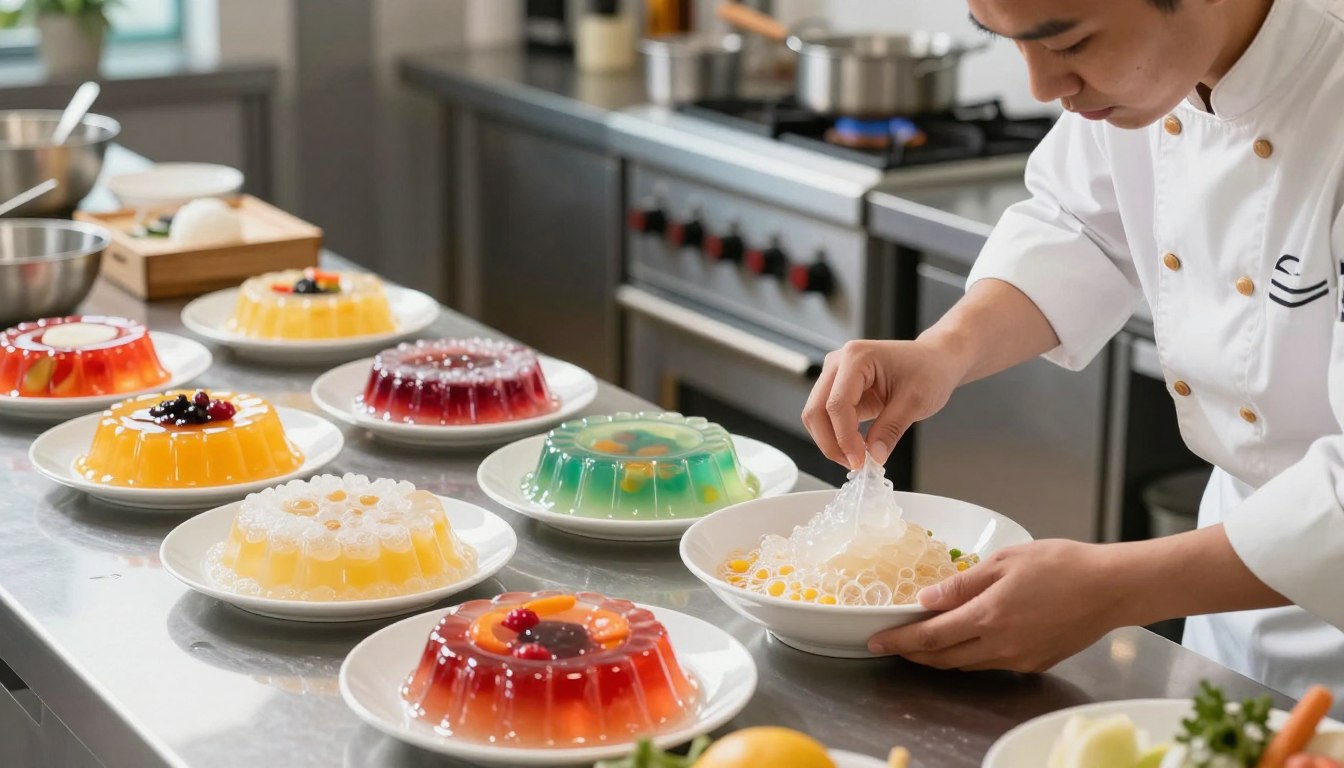Trending searches
Trending searches

Hydrocolloid: Low Methoxyl (LM) Pectin
SUBSCRIBE TO OUR BLOG
Promotions, new products, and recipes.
Low Methoxyl (LM) Pectin: The Calcium-Responsive Gelling Powerhouse
Low Methoxyl (LM) Pectin, distinguished from its high methoxyl counterpart by its reduced degree of esterification, exhibits unique gelling characteristics in the presence of calcium ions. What underpins this hydrocolloid's behavior, and why is it a sought-after ingredient in specific food formulations?
Historical Context
The distinction between high and low methoxyl pectins and their respective gelling mechanisms has been a focal point of research since the early days of pectin studies. LM Pectin's calcium-dependent gelling properties have made it a valuable asset in various food applications¹.
The Molecular Science of LM Pectin
LM Pectin, with a degree of esterification typically below 50%, forms gels in the presence of calcium ions. This calcium-sensitive behavior is attributed to the formation of "egg-box" structures, where calcium ions bridge the carboxyl groups of adjacent pectin chains².
Production and Refinement
LM Pectin is derived from the controlled de-esterification of native pectin, either through chemical or enzymatic methods. The resulting pectin showcases a unique ability to form gels in the presence of calcium³.
A Multifaceted Ingredient
LM Pectin's applications span various sectors:
- Food Industry: Predominantly used in reduced-sugar and sugar-free jams and jellies, dairy products, and acidified protein beverages⁴.
- Pharmaceuticals: Leveraged for its controlled-release properties in specific drug formulations⁵.
- Cosmetics: Valued for its stabilizing and textural attributes⁶.
LM Pectin in Culinary Creations
LM Pectin's gelling properties are influenced by calcium:
-
Jams and Jellies:
- Proportion: 0.5% to 1.0% of the total weight.
- Purpose: Ensures consistent gel structure, especially in reduced-sugar products.
Conclusion
Low Methoxyl (LM) Pectin, with its calcium-responsive gelling mechanism, remains an indispensable ingredient in the food industry. Its adaptability across various pH levels and sugar concentrations underscores its versatility.
See: Hydrocolloid Glossary
For further reading: High Methoxyl (HM) Pectin
References:
¹ Morris, V.J. "Gelling polysaccharides." Food Polysaccharides and Their Applications, 2006.
² Braccini, I., & Pérez, S. "Molecular basis of Ca²+-induced gelation in alginates and pectins: the egg-box model revisited." Biomacromolecules, 2001.
³ Willats, W.G.T., et al. "Pectin: cell biology and prospects for functional analysis." Plant Molecular Biology, 2001.
⁴ Rolin, C. "Commercial Pectin Preparations." Pectins and Pectinases, 1996.
⁵ Sriamornsak, P. "Chemistry of pectin and its pharmaceutical uses: A review." Silpakorn University International Journal, 2003.
⁶ Barel, A.O., et al. "Handbook of Cosmetic Science and Technology." CRC Press, 2009.


|
About the Author Ed is the founder of Cape Crystal Brands, editor of the Beginner’s Guide to Hydrocolloids, and a passionate advocate for making food science accessible to all. Discover premium ingredients, expert resources, and free formulation tools at capecrystalbrands.com/tools. — Ed |
Related Posts

Performance of Agar Agar in High-Temperature Food Preparations

Sodium Alginate vs Other Hydrocolloids: When to Use It

Is Sodium Alginate Safe to Eat? What Food Scientists Want You to Know
Enjoyed this post? Subscribe to The Crystal Scoop
Food-science tips, ingredient know-how, and recipes. No spam—unsubscribe anytime.
- Choosing a selection results in a full page refresh.
POLICY PAGES
QUICK LINKS
Guar Gum
Cape Crystal Brands, 18 Bank St., Suite 1, Summit NJ 07901.
- Phone: +1 908-273-5600
- Email: info@capecrystalbrands.com
- Tax ID: 26-2477626000
- FDA Facility Registration # 16980627550
- Kosher Certified: OKosher.org
Country/region
© 2026, Cape Crystal Brands | Sitemap
